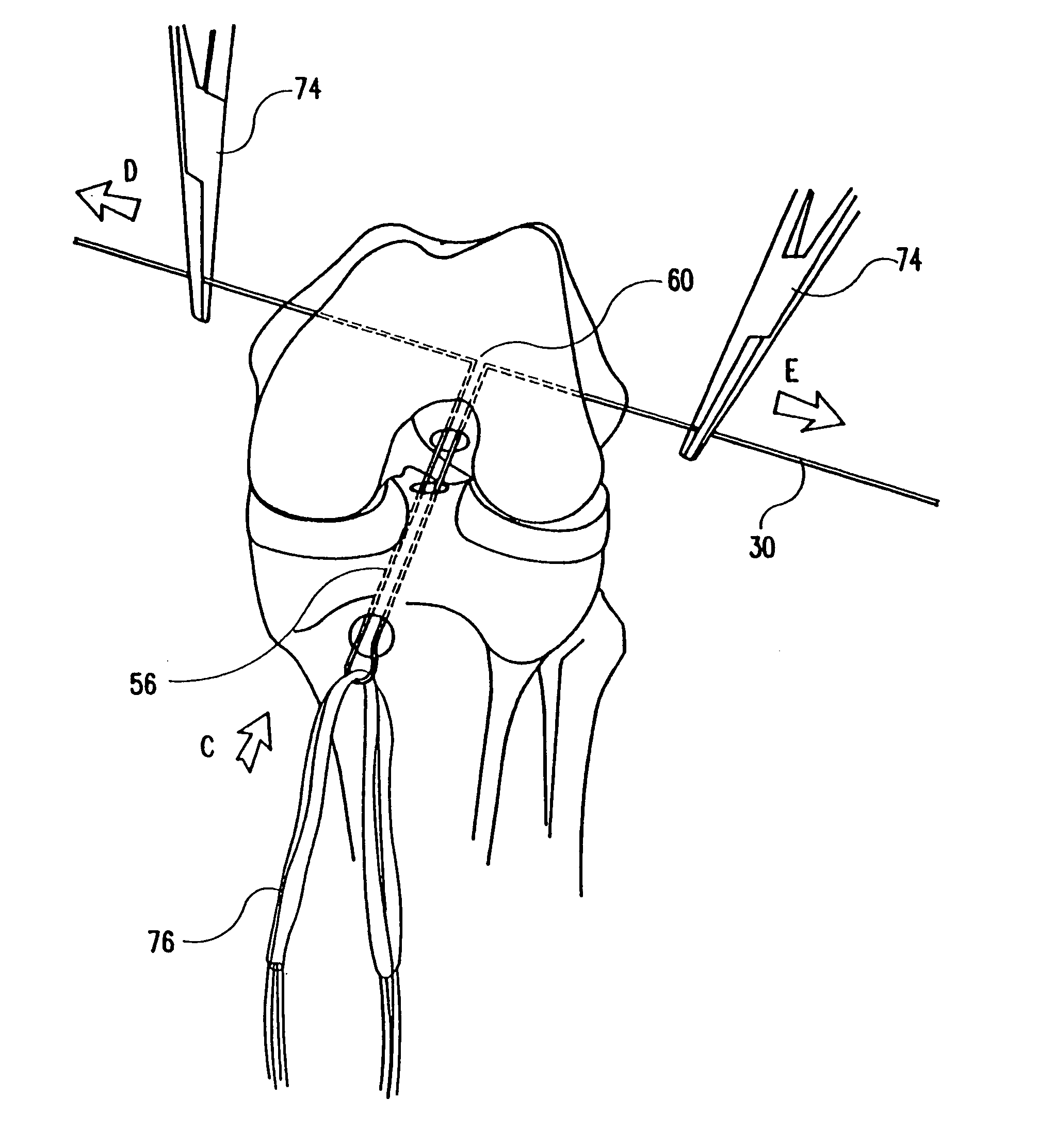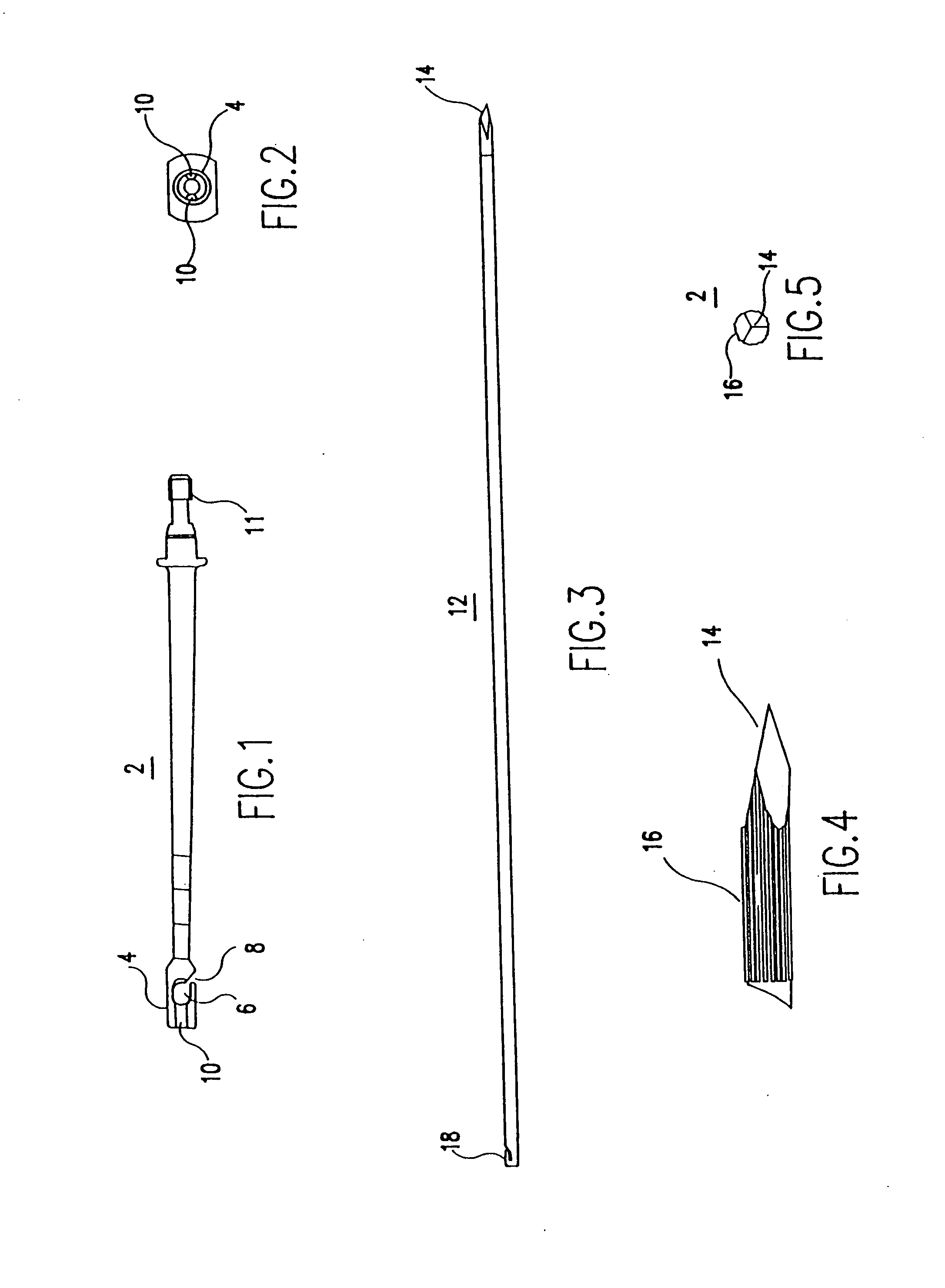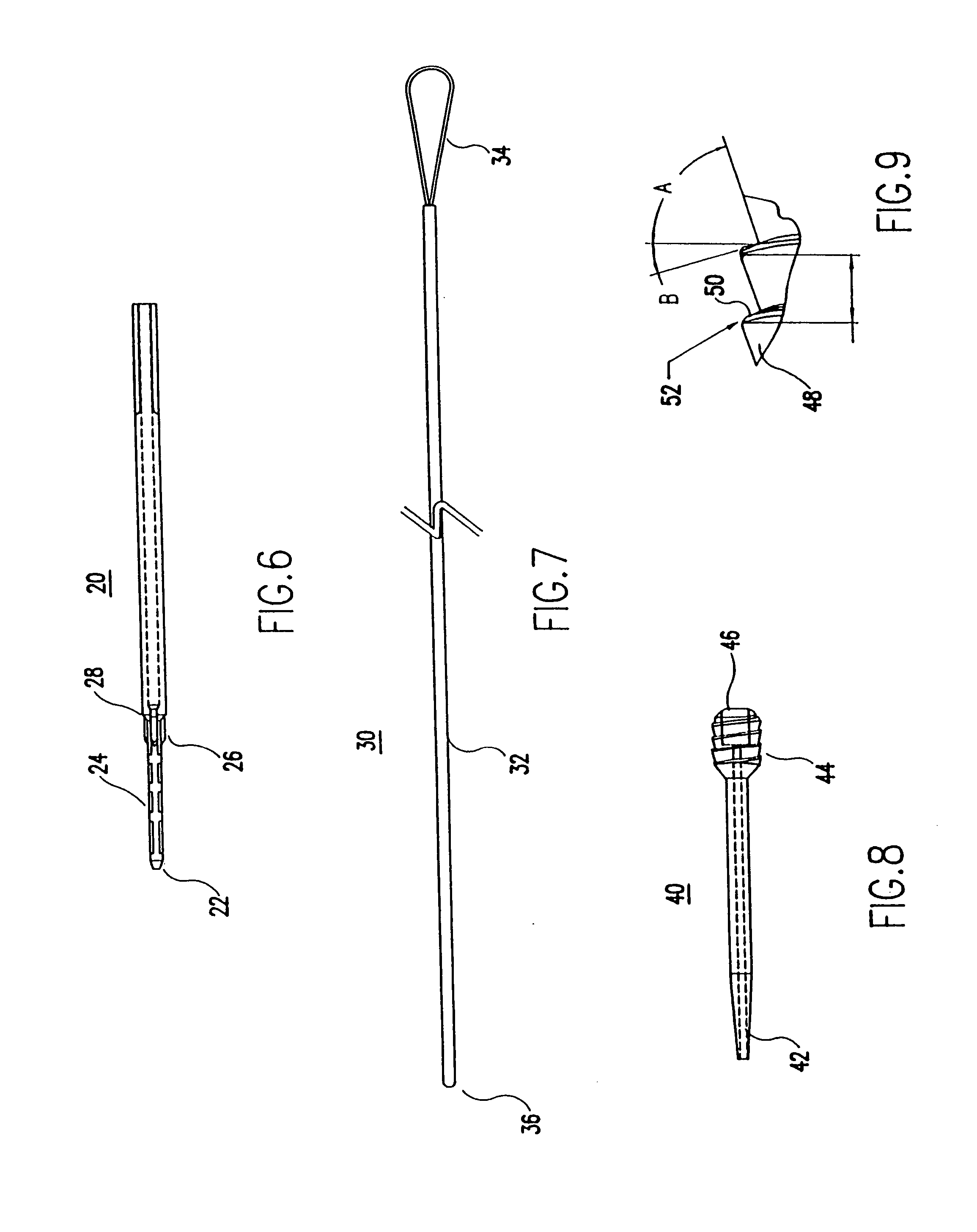Method of loading tendons into the knee
a technology of tendons and knees, applied in the field of anterior cruciate ligament reconstruction, can solve the problems of disadvantageous fixation methods, staples and suture buttons, and provide sufficient fixation
- Summary
- Abstract
- Description
- Claims
- Application Information
AI Technical Summary
Benefits of technology
Problems solved by technology
Method used
Image
Examples
Embodiment Construction
[0042] Referring initially to FIGS. 1 and 2, the present invention involves the use of a slim, longitudinal tunnel hook 2, which includes a shaft having a distal end and a proximal end. The distal end of tunnel hook 2 is provided with a hook 4, having a capture slot 6.
[0043] Various features of tunnel hook 2 are provided for ease of use in the inventive procedure of the present invention. The purpose of the following features will become more clear in light of the method described below. Angled opening 8 allows escape of a graft-passing wire from capture slot 6. Channels 10 on either side of hook 4 accommodate portions of the graft-passing wire as it forms a loop through a femoral tunnel. The proximal end of tunnel hook 2 features a mounting flange 11 for engagement with a drill guide.
[0044] Referring to FIGS. 3, 4, and 5, the invention also involves the use of a drill pin 12, which includes an elongated, narrow shaft having a pointed distal end and a proximal end. The distal end ...
PUM
 Login to View More
Login to View More Abstract
Description
Claims
Application Information
 Login to View More
Login to View More - R&D
- Intellectual Property
- Life Sciences
- Materials
- Tech Scout
- Unparalleled Data Quality
- Higher Quality Content
- 60% Fewer Hallucinations
Browse by: Latest US Patents, China's latest patents, Technical Efficacy Thesaurus, Application Domain, Technology Topic, Popular Technical Reports.
© 2025 PatSnap. All rights reserved.Legal|Privacy policy|Modern Slavery Act Transparency Statement|Sitemap|About US| Contact US: help@patsnap.com



